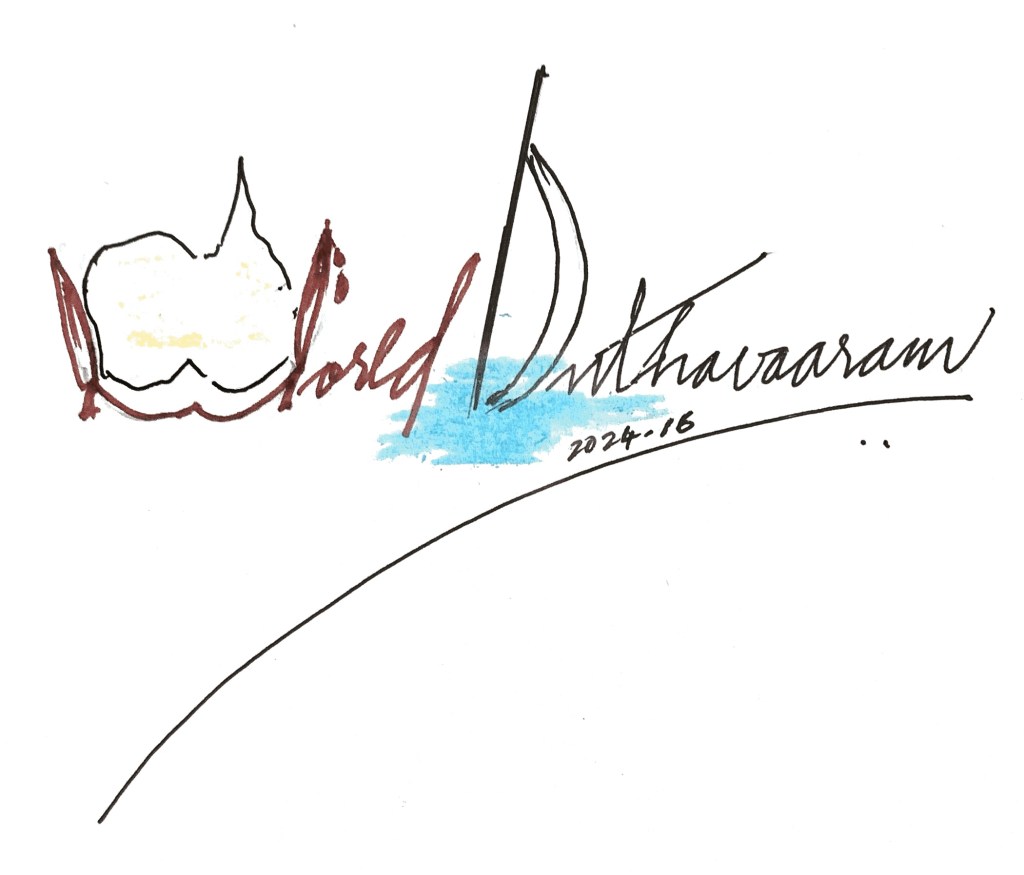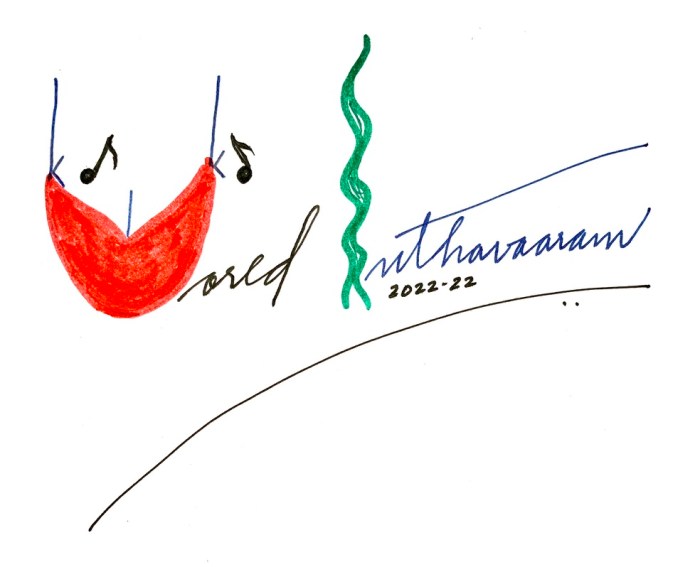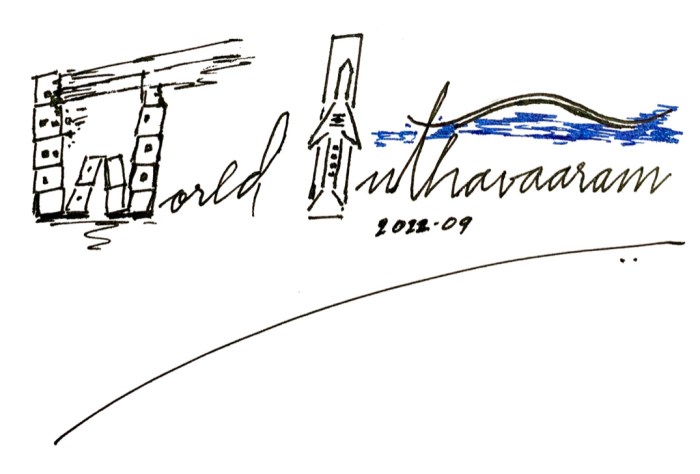
About: the world this week, 14 April 2024 to 20 April 2024: Israel & Iran; knives out in Australia; UAE goes underwater; India begins voting; and keeping a Princess & Future Queen safe.
Everywhere
Israel – Iran
In an insane move and probably a serious miscalculation, Iran attacked Israel launching over 300 drones and missiles into Israel. But, in an unbelievable military defence operation almost 99% of them were knocked-out by the combined might of the United States (US), United Kingdom(UK), and Israel. Actually, it was a multinational coalition consisting of, among others-a huge surprise-Jordon and Saudi Arabia!
Obviously, Iran’s action is a follow-through on its vow to avenge Israel’s attack on a ‘building next to it Consulate in Damascus, Syria’, which had resulted in the killing of Iran’s Revolutionary Guards Corps Commander and his deputy.
Iran’s strike began with over 100 ground-to-ground missiles being fired from Iran into Israel. Simultaneously, drones and ballistic missiles were fired from its partners-in-crime, Yemen, Iran, Iraq, and Syria.
Tens of Israel fighter jets were immediately scrambled, which included F15, F16, and F35 planes. The Israeli planes flew deep into the airspace of the Middle East and began hunting the missiles and drones, detonating them one after the other. In parallel, fighter jets from the US and UK, along with other countries also took off from various Bases, and began to ‘hunt down’ the missiles. Whatever survived the fighter jet attacks and managed to reach Israeli airspace were immediately taken out by Israel’s Air defence systems including the Iron Dome, Hetz (Arrow) 2, Hetz 3, and more.
Israel and its allies mostly shot down all the missiles and drones and there were no deaths, but Israel says it must retaliate to preserve the credibility of its deterrents. Iran says it views the matter as closed but will retaliate again if Israel does.
What Israel will do next is yet to be seen, but the Iranian regime was humiliated that night, and to top that off, they are now waiting in fear to see how badly Israel punishes them.
Then late in the week, Israel carried out a surprise attack deep inside Iran’s territory, hitting an Iranian military base at Isfahan. The base is used by combat aircraft and military transport planes, likely with air defence systems – which seems to have been ‘defanged’ by the surgical strike. It is also close to a major Iranian nuclear facility for uranium enrichment. This strike was symbolic, sending a message that Israel is capable of targeting Iran’s nuclear facilities or anywhere in Iranian soil.
Israel had a point to make and it made it. What next?
Australia: Knives Out
Last Saturday in Australia, a knife-wielding man went on a stabbing rampage at the Westfield Shopping Centre in Bondi Junction, in Sydney’s Eastern suburbs, before a woman police inspector shot him dead after he turned and raised a knife.
The attacker identified as 40-year-old Joel Cauchi, was known to police in the neighbouring state of Queensland. Cauchi, wearing shorts and an Australian national rugby league jersey, ran through the Westfield Mall with a knife. He fatally stabbed six people and injured at least 12 before he was killed by Inspector Amy Scott who ran into the shopping centre by herself, confronted the terrorist and killed him. Incredible heroism on display.
The man first stabbed a mother and her baby. The mother Ash Good, 38, died from her injuries while her baby who was also stabbed has undergone surgery and is in serious condition. The knife rampage lasted 15 minutes.
It was revealed that police knew the attacker and was and on their radar. He had mental health issues in the past and there is no indication ideology was a motive in the attack.
Quick on the heels of the knife attack on Monday another stabbing incident took place at a Sydney church, which Police have declared as religiously motivated and a terrorist act. A 16-year-old boy attacked a Bishop, a priest and churchgoers during mass at the Assyrian Christ The Good Shepherd Church, which was being streamed online.
Four people suffered ‘non-life-threatening’ injuries. The attacker was also hurt. Police arrested the boy after the stabbing at the Church that injured Bishop Mar Mari Emmanuel, 53, and a priest. Both are expected to survive.
The video online showed the Bishop being repeatedly stabbed in the head and upper body during the service. He sustained lacerations to his head after being lunged at. And underwent surgery. A 39-year-old man also sustained cuts and a shoulder injury while attempting to intervene.
Ordained by the Assyrian Orthodox Church in 2011, Bishop Mar Mari Emmanuel is seen as a popular and a controversial figure. His sermons have received millions of views on social media. But the Bishop has had a turbulent relationship with the Assyrian Church, reportedly being suspended for disobeying canons and forming a breakaway church. In 2021, Mar Mari Emmanuel became a vocal opponent of Covid-19 restrictions, describing lockdowns in Australia as slavery and arguing that vaccines were futile.
The teenage boy arrested after the stabbing attack inside the Sydney church was placed on a good behaviour bond after facing Court for a knife crime just three months ago. Police know the identity of the 16-year-old boy, but have chosen not to publish his name. The boy was charged with a range of offences, including possessing a knife, in November last year after an incident at a Sydney train station involving other teenage boys. The boy was found in possession of a flick knife and charged with being armed with a weapon with intent to commit an indictable offence, stalking and/or intimidation and recklessly destroy or damage property. He was on bail until his last court appearance in January, where his case was ‘proven’ but dismissed with a good behaviour bond.
Police said the suspect’s comments pointed to a religious motive for the attack.
“We’ll allege there’s a degree of premeditation on the basis that this person has travelled to that location, which is not near his residential address, he has travelled with a knife and subsequently the Bishop and the priest have been stabbed,” Police said. “They’re lucky to be alive”.
Dubai: Desert Storm
How many times we have heard this often repeated line – almost a cliche-‘The whole year’s rain came down in a single day’. The rain, tired of conquering the seas, the costal areas, and fertile hills and valleys turned its sights on the Desert and United Arab Emirates’ (UAE) Dubai, and Oman ‘came under its wing’.
This week the UAE was drowned in unprecedented rains brought by a storm that brewed over the desert, the heaviest experienced by the country in the 75 years. It brought much of Dubai to a standstill and caused significant damage. The storm hit neighbouring Oman on Sunday and then pounded the UAE on Tuesday, with 20 reported dead in Oman and one in the UAE.
While some roadways in hard-hit communities remain flooded, delivery services across Dubai, whose residents are used to ordering everything at the click of a mouse, slowly began returning to the streets.
Rains are rare in the UAE and elsewhere on the Arabian Peninsula, which is typically known for its dry desert climate. Summer air temperatures can soar above 50 degrees Celsius. Following Tuesday’s rains, questions were raised whether cloud seeding-a process of manipulating clouds to increase rainfall- that the UAE frequently conducts, could have caused the heavy rain. A UAE government agency that oversees cloud seeding denied conducting any such operations before the storm. But climate experts blame global warming for such extreme weather events.
Researchers anticipate that climate change will lead to heightened temperatures, increased humidity and a greater risk of flooding in parts of the Gulf region. Countries like the UAE where there is a lack of drainage infrastructure to cope with heavy rains can suffer the most.
Dubai, a city in the desert proud of its modern gloss, faced the towering task of clearing its water-clogged roads and drying out flooded homes. Dubai International Airport, a major travel hub, struggled to clear a backlog of flights and many roads were still flooded in the aftermath of Tuesday’s deluge.
Inking India’s Finger
This week, Friday 19th April, marked the beginning of the biggest Festival of Democracy the world has seen. The first phase, of the seven-phase polls, decides 102 seats in 21 Indian States for India’s 543 member Lower House of Parliament, the Lok Sabha. And after meandering through the rest of April and May concludes on 1st June 2024.
An average of 60% of voters in various States got their finger inked with indelible ink – to mark that they have voted. The aggregate voter turnout till 9pm was 62.37 % with the highest percentage in Tripura at 80.17%. In the previous Elections in 2019 the aggregate was 69.43% in the first Phase.
The process was by and large peaceful, except for incidents in the State of Tamil Nadu, and others, that names have been left out of the Voters List despite having a valid Voter Identification. The Election Commission of India needs to get its tails-up to resolve this problem. Violence was reported in some parts of West Bengal and Manipur and the voter turnout fell from the figure in the 2019 Lok Sabha Elections.
Tough being a Princess and a Future Queen
The Netherlands, a country of 18 million people, has low rates of violent crime – a safe country. Its royal family are sometimes called ‘the bicycle monarchy’ for their informal approach to royal duties. But there is a problem. Princess Amalia, 20, the future Queen of the Netherlands, has been living outside her country for the past year over security concerns. Amalia is the eldest daughter of the Dutch King Willem-Alexander and his Argentine-born wife Queen Maxima and will one day ascend the throne as the country’s next monarch.
However, the young Princess has been forced to leave the Netherlands due to kidnapping threats. This is based on intelligence reports indicating Amalia was mentioned in communications by organised crime groups, sparking fears she could be a target of attacks. Amalia has been living in Madrid, Spain for the past year but recently relocated to the palace after new measures were taken to ensure her safety. She made a rare appearance at a state banquet at the royal palace in Amsterdam with her parents in honour of the Spanish royal family.
In September 2022, the Princess began studying at the University of Amsterdam and briefly lived on campus with other students as she pursued a bachelor’s degree in politics, psychology, law and economics. However, soon afterwards the royal family said she had been forced to leave her student housing, citing similar concerns for her safety, and she moved back into the palace and became a virtual recluse. “She can’t live in Amsterdam, and she can’t really go outside (the palace),” Queen Maxima told journalists at the time. The Netherlands needs a Princess Shield.
More Princess stories coming in the weeks ahead. Build your Palace with World Inthavaaram.



